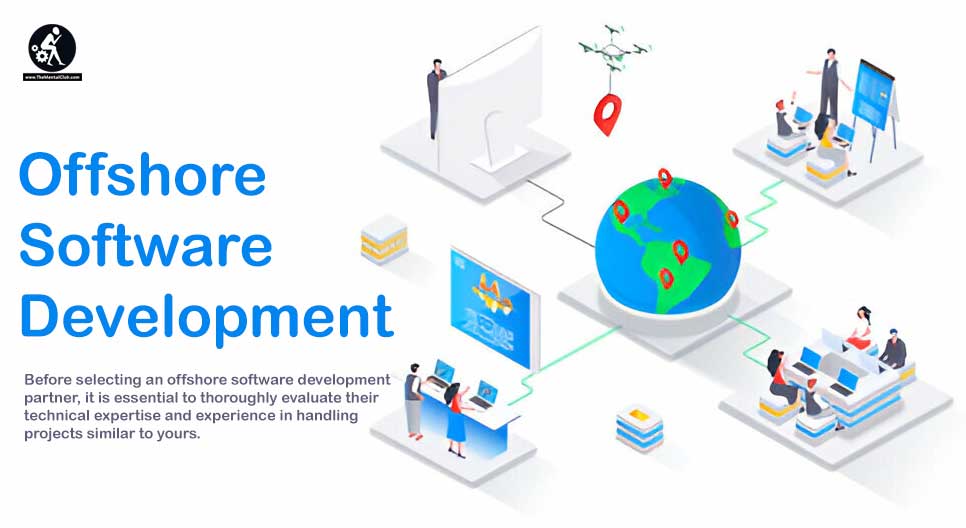Outsourcing software development brings a plethora of benefits to businesses of all sizes. One of the primary advantages is cost-effectiveness. By outsourcing, companies can significantly reduce their operational costs, as they are not required to invest in infrastructure, hiring full-time employees, or managing a development team in-house.

This cost-saving aspect allows businesses to allocate their resources more efficiently and focus on their core competencies, ultimately leading to increased profitability and growth. Additionally, outsourcing software development provides access to a global talent pool, enabling companies to collaborate with skilled professionals from around the world who bring diverse perspectives and expertise to the table. This diverse talent pool often results in higher quality work and innovative solutions that may not have been achievable internally.
Understanding Offshore Development Team Structure
Offshore Software Development Service structures are typically organized into different roles that work together to deliver software solutions. These roles may include project managers, software developers, quality assurance testers, and system administrators. Each team member plays a crucial role in ensuring the success of the project by utilizing their expertise and skills in their respective areas.

Moreover, offshore development teams often follow a hierarchical structure where project managers oversee the overall progress of the project, while software developers are responsible for coding and programming tasks. Quality assurance testers ensure that the software meets the specified requirements and system administrators handle the technical aspects of the project. This structured approach helps in efficient task allocation and ensures that all aspects of the project are covered by the team members.
Factors to Consider Before Choosing an Offshore Software Development Partner
Before selecting an offshore software development partner, it is essential to thoroughly evaluate their technical expertise and experience in handling projects similar to yours. Assessing their portfolio and past client reviews can provide valuable insights into the quality of their work and their ability to meet project requirements effectively. It is also crucial to consider their team size, skill set, and capabilities to ensure they have the necessary resources to successfully execute your project.

Additionally, evaluating the communication channels and language proficiency of the offshore development team is vital for fostering clear and effective collaboration. Seamless communication is key to ensuring that project requirements are understood correctly and that any issues or concerns are addressed promptly. It is advisable to establish regular communication protocols and tools upfront to facilitate smooth and efficient information exchange throughout the project lifecycle.
How to Ensure Effective Communication with the Offshore Development Team
When working with an offshore development team, ensuring effective communication is essential for the success of the project. One way to achieve this is by establishing clear communication channels right from the start. This includes determining the preferred methods of communication, whether it be through emails, instant messaging, video calls, or project management tools, and setting regular check-in meetings to provide updates and address any issues that may arise.

Additionally, it is important to foster a culture of transparency and openness within the team. Encouraging team members to voice their opinions, share their ideas, and express any concerns they may have can help prevent misunderstandings and promote a collaborative working environment. Providing regular feedback and addressing any communication issues promptly can also help maintain a smooth flow of information and ensure everyone is on the same page throughout the project.
Top Challenges of Offshore Software Development and How to Overcome Them
One of the key challenges of offshore software development is the potential for miscommunication due to language barriers and cultural differences. This can lead to misunderstandings, delays in project timelines, and ultimately impact the quality of the final product. To overcome this challenge, it is essential to establish clear and effective communication channels from the onset of the project. Regular video calls, instant messaging platforms, and project management tools can help bridge the communication gap between the offshore development team and the client.

Another common challenge in offshore software development is the lack of direct oversight and control over the development process. Clients may feel anxious about not being able to closely monitor the progress of the project or make real-time adjustments as needed. To address this challenge, clients can implement robust project management practices, such as setting clear project milestones, conducting regular progress reviews, and leveraging agile development methodologies. Additionally, hiring a reputable offshore software development partner with a proven track record of delivering high-quality results can provide clients with the assurance and confidence they need throughout the development process.
Key Differences Between Offshore and Onshore Software Development
Offshore software development involves hiring a team located in a different country or region, while onshore software development occurs within the same country as the client. One key difference between the two is the cost factor. Offshore development is often more cost-effective due to lower labor costs in certain countries, whereas onshore development can be pricier due to higher wages and operating expenses.
Another significant difference lies in the time zone and cultural aspects. Offshore teams may be in a different time zone, which can either be advantageous for round-the-clock work or challenging for real-time communication. Additionally, cultural differences in work ethics, communication styles, and understanding of project requirements can impact the efficiency and success of the software development process.


































![The Advanced Web Development | Tutorials [Downloadable HD Formatted Video Series – Learn Step By Step] Advance Web Development Course](https://thementalclub.com/wp-content/uploads/2017/05/Advance-Devloper-Course-100x70.png)